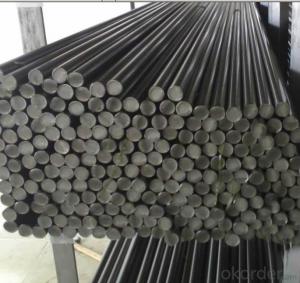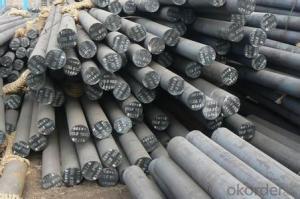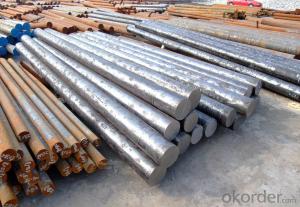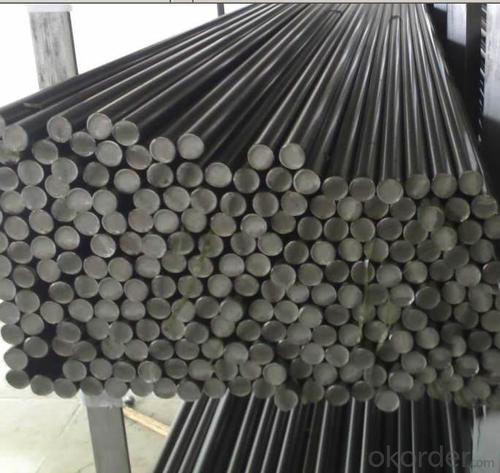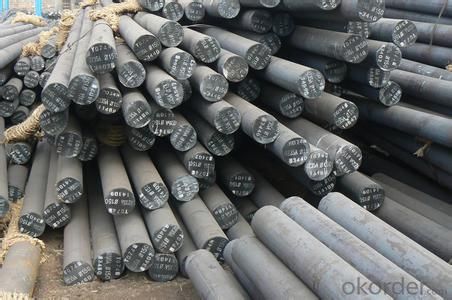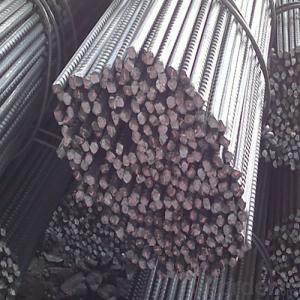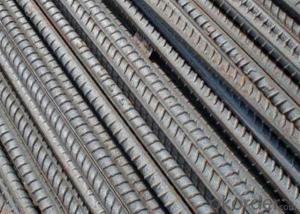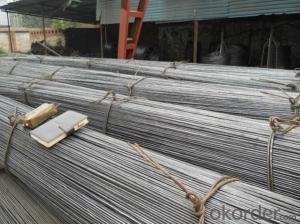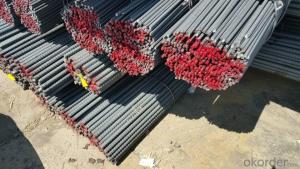Hot Rolled Deformed Steel Bar HRB400
- Loading Port:
- China Main Port
- Payment Terms:
- TT or LC
- Min Order Qty:
- -
- Supply Capability:
- -
OKorder Service Pledge
OKorder Financial Service
You Might Also Like
Product Description:
OKorder is offeringDeformed Steel Bar at great prices with worldwide shipping. Our supplier is a world-class manufacturer of steel, with our products utilized the world over. OKorder annually supplies products to European, North American and Asian markets. We provide quotations within 24 hours of receiving an inquiry and guarantee competitive prices.
Product Applications:
Deformed bar is widely used in buildings, bridges, roads and other engineering construction. Big to highways, railways, bridges, culverts, tunnels, public facilities such as flood control, dam, small to housing construction, beam, column, wall and the foundation of the plate, deformed bar is an integral structure material. With the development of world economy and the vigorous development of infrastructure construction, real estate, the demand for deformed bar will be larger and larger..
Product Advantages:
OKorder's Deformed Steel Bar are durable, strong, and resist corrosion.
Main Product Features:
· Premium quality
· Prompt delivery & seaworthy packing (30 days after receiving deposit)
· Corrosion resistance
· Can be recycled and reused
· Mill test certification
· Professional Service
· Competitive pricing
Product Specifications:
Chemical Composition: (Please kindly find our chemistry of our material based on HRB400 as below for your information)
Grade | Technical data of the original chemical composition (%) | ||||||
C | Mn | Si | S | P | V | ||
HRB400 | ≤0.25 | ≤1.60 | ≤0.80 | ≤0.045 | ≤0.045 | 0.04-0.12 | |
Physical capability | |||||||
Yield Strength (N/cm²) | Tensile Strength (N/cm²) | Elongation (%) | |||||
≥400 | ≥570 | ≥14 | |||||
FAQ:
Q1: Why buy Materials & Equipment from OKorder.com?
A1: All products offered byOKorder.com are carefully selected from China's most reliable manufacturing enterprises. Through its ISO certifications, OKorder.com adheres to the highest standards and a commitment to supply chain safety and customer satisfaction.
Q2: What makes stainless steel stainless?
A2: Stainless steel must contain at least 10.5 % chromium. It is this element that reacts with the oxygen in the air to form a complex chrome-oxide surface layer that is invisible but strong enough to prevent further oxygen from "staining" (rusting) the surface. Higher levels of chromium and the addition of other alloying elements such as nickel and molybdenum enhance this surface layer and improve the corrosion resistance of the stainless material.
Q3: Can stainless steel rust?
A3: Stainless does not "rust" as you think of regular steel rusting with a red oxide on the surface that flakes off. If you see red rust it is probably due to some iron particles that have contaminated the surface of the stainless steel and it is these iron particles that are rusting. Look at the source of the rusting and see if you can remove it from the surface.
Images:
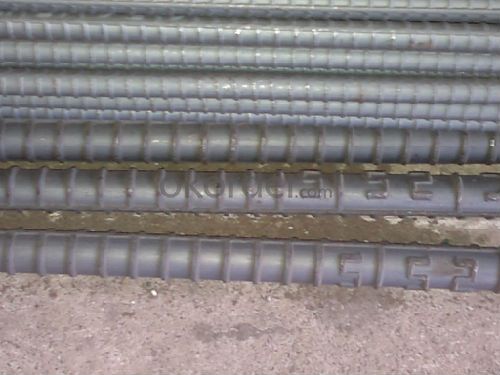
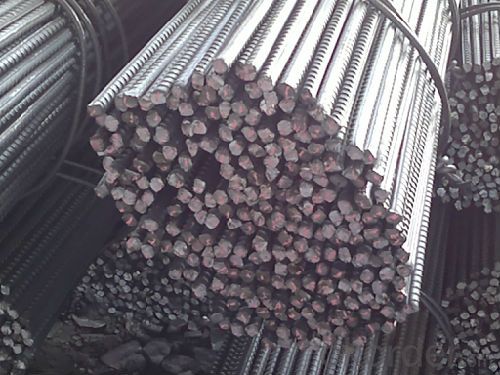
- Q: How do steel rebars contribute to the overall sustainability of concrete structures?
- Steel rebars contribute to the overall sustainability of concrete structures in several ways. Firstly, steel rebars enhance the durability and lifespan of concrete structures. By reinforcing the concrete, rebars provide added strength and prevent cracking or structural failures, thereby extending the life of the structure. This reduces the need for frequent repairs or replacements, saving resources and minimizing the environmental impact of construction activities. Moreover, steel rebars are 100% recyclable. At the end of a structure's life cycle, the rebars can be easily removed and recycled, reducing the demand for new raw materials and minimizing waste. This not only conserves natural resources but also reduces greenhouse gas emissions associated with the extraction and production of virgin steel. Additionally, incorporating steel rebars into concrete structures allows for the use of thinner concrete sections. By using less concrete, there is a reduced demand for cement, which is a major contributor to carbon dioxide emissions during its production. Therefore, the use of steel rebars helps to lower the overall carbon footprint of concrete structures. Furthermore, steel rebars can be designed to resist corrosion, which is a common issue in concrete structures exposed to harsh environments or in coastal areas. By providing protection against corrosion, the rebars increase the service life of the structure, reducing the need for maintenance and repairs. This not only saves costs but also reduces the environmental impact associated with maintenance activities. Overall, steel rebars play a crucial role in enhancing the sustainability of concrete structures by improving their durability, enabling recycling, reducing material consumption, and minimizing maintenance requirements. By incorporating steel rebars into concrete construction, we can create long-lasting, environmentally-friendly structures that contribute to a more sustainable built environment.
- Q: Can steel rebars be used in road construction projects?
- Yes, steel rebars can be used in road construction projects. Steel rebars are commonly used as reinforcement in concrete structures, including roads. They help to increase the overall strength and durability of the road by reinforcing the concrete. The rebars are typically placed within the concrete pavement to provide tensile strength and prevent cracking or breaking under heavy loads. Additionally, steel rebars are corrosion-resistant, which is essential for road construction projects where exposure to moisture and harsh weather conditions is common. Overall, using steel rebars in road construction projects enhances the structural integrity and longevity of the road.
- Q: Can steel rebars be used in high-strength concrete?
- Yes, steel rebars can be used in high-strength concrete. In fact, they are commonly used as reinforcement in high-strength concrete structures to enhance the overall strength and durability of the concrete.
- Q: What are the different types of tests conducted on steel rebars for quality assurance?
- There are several types of tests conducted on steel rebars for quality assurance. Some common tests include tensile testing, bend testing, impact testing, hardness testing, and chemical composition analysis. These tests help ensure that the rebars meet the required mechanical properties, dimensional tolerances, and chemical composition standards, ensuring their quality and suitability for various construction applications.
- Q: What are the common challenges in handling steel rebars during construction?
- There are several common challenges in handling steel rebars during construction. One of the main challenges is the weight and size of the rebars. Steel rebars can be quite heavy and bulky, making them difficult to lift and maneuver on the construction site. This can pose a risk of injuries to the workers if proper lifting techniques and equipment are not used. Another challenge is the proper storage and organization of the rebars. Since rebars come in various lengths and sizes, it is important to have a well-organized storage area to keep them separated and easily accessible. Failure to do so can result in delays and inefficiencies during construction. Additionally, steel rebars are prone to rust and corrosion if not properly handled and stored. Exposure to moisture, rain, or even excessive humidity can cause the rebars to deteriorate, leading to weakened structures. Therefore, it is crucial to protect the rebars from these elements and store them in a dry and well-ventilated area. Furthermore, the placement and alignment of rebars within concrete structures can be challenging. It requires skilled labor and precision to ensure that rebars are correctly positioned according to the construction plans. Any errors in placement can compromise the structural integrity of the building, leading to safety concerns and costly repairs. Lastly, the transportation of rebars to the construction site can be a logistical challenge. Coordinating the delivery of rebars and ensuring they arrive on time and in the required quantities can be complex, especially in large-scale construction projects. Delays in receiving the rebars can cause project delays and additional costs. Overall, handling steel rebars during construction requires careful planning, proper storage, skilled labor, and adherence to safety protocols. By addressing these common challenges, construction projects can ensure the successful and efficient use of steel rebars.
- Q: What are the different methods of protecting steel rebars from fire?
- There are several methods for protecting steel rebars from fire. One common approach is to apply a fireproof coating or intumescent paint to the surface of the rebars. This coating expands when exposed to high temperatures, forming an insulating layer that helps protect the steel from the fire. Another method involves encasing the rebars in fire-resistant materials, such as concrete, which provides a barrier against the heat and flames. Additionally, using fireproof sleeves or wraps around the rebars can provide thermal insulation and prevent direct contact with the fire. Lastly, utilizing fireproofing sprays or fire-resistant boards can help protect steel rebars from fire by reducing the transfer of heat.
- Q: Can steel rebars be used in structures subjected to chemical exposure?
- Steel rebars can be used in structures subjected to chemical exposure, but their suitability depends on the specific type and concentration of chemicals involved. In general, stainless steel rebars or epoxy-coated rebars are preferred for such applications as they provide better resistance to corrosion and chemical attack compared to plain carbon steel rebars. However, it is important to conduct a thorough evaluation of the chemical environment and consult with experts to determine the most appropriate rebar material for the specific structure and its intended use.
- Q: Can steel rebars be used in precast concrete walls?
- Yes, steel rebars can be used in precast concrete walls. The presence of rebars helps to reinforce the concrete and increase its strength and durability. Rebars are commonly used in precast concrete walls to provide structural integrity and resist the forces acting on the wall.
- Q: Can steel rebars be used in sports stadium construction?
- Yes, steel rebars can be used in sports stadium construction. Steel rebars are commonly used as reinforcement in concrete structures, including sports stadiums, to enhance the strength and durability of the overall construction. The strong and durable nature of steel rebars makes them ideal for withstanding the heavy loads and stresses that sports stadiums often experience.
- Q: What is the impact of steel rebars on the overall sustainability of a building?
- Steel rebars have a significant impact on the overall sustainability of a building. The use of steel rebars in construction enhances the structural integrity and longevity of a building, reducing the need for frequent repairs and replacements. This, in turn, contributes to the sustainable aspect of a building by minimizing resource consumption and waste generation. Moreover, steel is a highly recyclable material, allowing for a circular economy approach in construction. By incorporating steel rebars, buildings can achieve higher energy efficiency, reduced environmental footprint, and enhanced durability, thus positively impacting their overall sustainability.
Send your message to us
Hot Rolled Deformed Steel Bar HRB400
- Loading Port:
- China Main Port
- Payment Terms:
- TT or LC
- Min Order Qty:
- -
- Supply Capability:
- -
OKorder Service Pledge
OKorder Financial Service
Similar products
Hot products
Hot Searches
Related keywords
